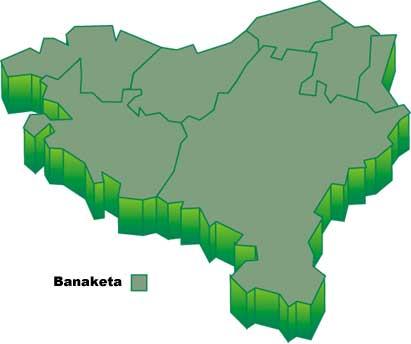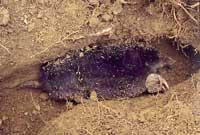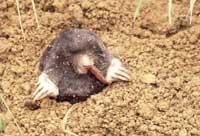Common mole, worm tear

Who could expect our sleeping nap to end that vagrant thing that came out of the ground? We, at least, when we returned from the mountain and fell under that ash. But when we were half asleep, at the height of the ear we had against the earth, from time to time... ”treatment, treatment..., treatment,” we start listening to the sounds. At first we were surprised, but 15 minutes later, the pile of earth that was moving at a stroke and above taught us what was happening in that part.
Moles are animals with incredible evolutionary adaptations to live in the subsoil. These small mammals, despite being classified in a primitive order, present a surprising degree of specialization to live underground, with excellent “excavators”. In the Basque Country we can find two species: the blind mole ( Talpa occidentalis), which only appears in the West, and which can be differentiated by its lighter color in ends and legs, and the larger common mole ( Talpa europaea), more abundant in these areas.

The common mole is certainly a special animal. The 11-16 cm body is cylindrical and extremely robust. The skull has a length of between 33 and 37 mm and its weight ranges from 60 to 130 g. On the front you can see a wide head with hardly any necks, and on the tip of it you can see a moving end in the form of a horn. At the bottom has a hairy tail of 2-4 cm.
Life hypogea demands special sense organs. In this way, touch and smell are very developed, being essential for hunting. This curious animal has neither ears nor eyes; the first ones would hinder to go up and down the tunnels, and the second ones, in absolute darkness, are not necessary. It has an ear and a certain vision, but the auditory holes are hidden in the stretch of hair, with eyes degenerate and covered with hair.
From the legs of this singular mammal we could say the same thing. The hands are powerful inductor blades. Very similar to the shovel of an excavator or excavator. They leave directly from the body without just arms and are oriented to the sides to throw the soil to the ribs and to the bottom. They are very wide and with long barks, the backs are very small and as the previous ones have 5 fingers.
The hair, on the other hand, is very short, compact and similar to velvet, very sweet. Fragile black or black color. This skin allows you to move forward and back into the gallery of sausages.
The male and female are quite similar and their differentiation is not easy outside the time of zeal and breeding. They are territorial, and especially if two males are found, there can be fights and fights.

The usual addresses of the animal are grass fields, forests, orchards, gardens and the like. Apparently, more than landscape or vegetation, the type of terrain is the one that conditions the appearance of the mole. However, as a result of the construction of the tunnels, he does not like rocky lands, full of lois, scattered or very compact.
The mole is a great hunter and his energy needs make him hit and hunt every day through the holes. To meet metabolic needs, the mole must capture every day as many insects, larvae... and especially worms as their weight. In hunting use extreme vibrations or sensitive hairs to detect hunting pieces and sharp tusks to kill them at full speed. It is possible that the changes of station in the subsoil are not noticed as much but as the mole does not hybern, because if not, it can fill a room with food. Inside, of course, it keeps the worms and in addition, to keep them alive and fresh, feeds on the front tip. Thus, worm worms are alive and impossible to escape when the mole needs them.
Summer and autumn are not the best times to find worms, as they flee from land and are in depth. Therefore, the availability of food will be less for the mole and will not grow at this time. The equalization occurs therefore between winter and May. In this period they may have one or two growths and after 4 weeks of gestation, the female is given birth between 2 and 7 children. The offspring are hairless and blind at birth and take 3 weeks to open their eyes to leave the 5 breaks and something more so that each child can follow their path. Sexual maturity comes with one year and survival is 3 to 4 years.

Although difficult to see, detecting this great hunter is very easy. In the galleries it manufactures, most of the time it takes the land outside leaving “mole piles” in sight. Looking at them, we can see how the complex interior gallery system is. A simple gallery, about 40-50 m long and 150 m high. In the underground and connected by tunnels can also exist nest, room and pantry. The size of the holes can help differentiate galleries of mole, satain, rats and other animal species. The holes of the common mole are almost round and about 4 cm in diameter. These holes and piles of land make the peasants not fall too much in love with the mole.
As for distribution, we could find it throughout continental Europe, except in Scandinavia, Ireland and Iceland. Nor does it appear in some islands and territories of Southern Europe, occupying only the northeast of the Iberian peninsula.
In Euskal Herria is common in the humid and poorest area in the south. In the latter it appears in the cooler and moist places. The height does not have much influence and we can find ourselves 2,000 meters from the sea level.
Species: Talpa europaea |





